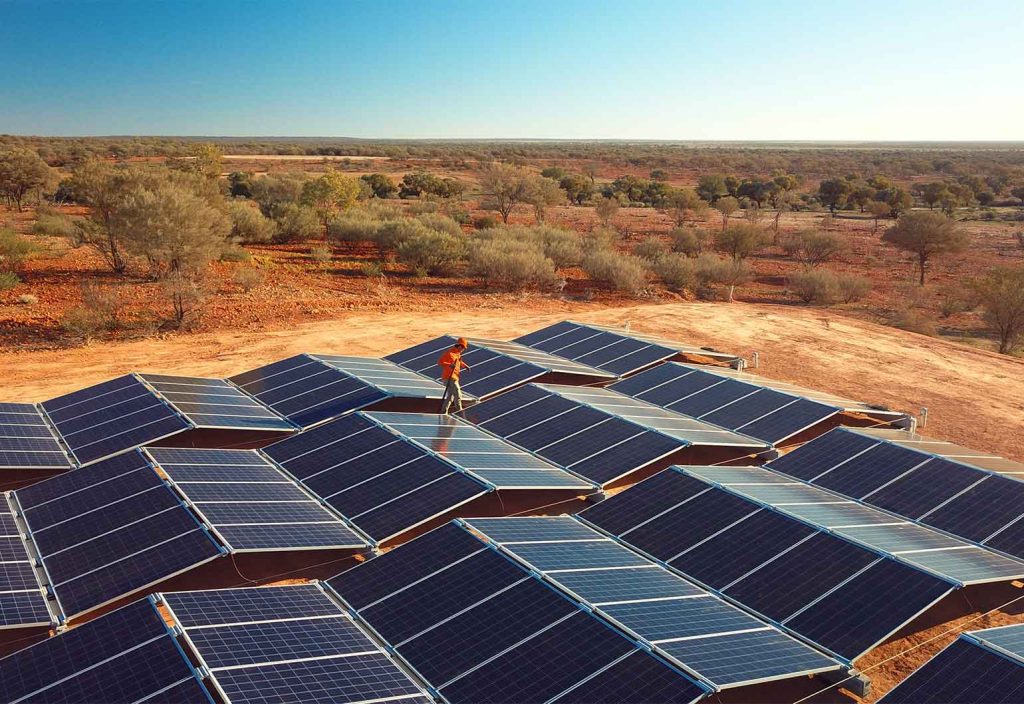The multi-gigawatt Australia-Asia PowerLink (AAPowerLink) is a high-capacity solar generation, storage and transmission system that will send large volumes of renewable electricity from the Northern Territory to markets in Darwin and Singapore.
Combining the world’s largest solar farm and battery storage facility in the Northern Territory with a 5000 km transmission system, the link will provide markets with reliable renewable electricity and carbon emissions abatement estimated at 8.6 million t of CO2e per year.
The project, led by Sun Cable, aims to provide 3.2 gigawatts of dispatchable electricity, through 4200 km of high voltage direct current (HVDC) submarine cable and 12,500 hectares of solar arrays. It could power up to 15 per cent of Singapore’s electricity needs from 2028.
Engineering firms SMEC, Bechtel and Hatch have been engaged as technical experts. Engineers Australia member Colin Watson MIEAust, National Manager Power and Energy at SMEC Australia, told create that the firm was delighted to be working as part of the project delivery team.
“SMEC will will focus on the onshore generation side of the project, contributing our design leadership and deep technical expertise to the development of the 17-20 gigawatt solar farm, including all battery and substation designs,” he said.
AAPowerLink will harness Australia’s abundant solar resources to meet growing electricity demand by integrating solar, battery and HVDC technologies to establish a renewable energy transmission grid.
Key components of the project include:
- A solar farm precinct including energy storage and voltage source converter (VSC)
- A high voltage direct current overhead transmission line from the solar farm to Darwin
- VSCs and a utility-scale battery in Darwin
- A subsea HVDC cable system from Darwin to Singapore
- A VSC and utility-scale battery in Singapore
Engaging expertise
Watson said building one of the world’s largest renewable energy infrastructure projects will see the engineers encounter a number of obstacles.
“Any time you are doing something for the first time you will meet challenges, but this is why we are so excited about the future of this project,” he said.
“The physical size of the project presents many challenges across integration, logistics and construction. Sun Cable has already engaged with universities and other research and development entities to bring the latest development and innovations to assist in the successful design and delivery of the project.”
The international nature of the project also throws up unique challenges. For example, getting approval from Indonesia, whose waters the cable will need to run through in order to reach Singapore. This hurdle was cleared in September, when Indonesia announced its support for the project following Sun Drive’s commitment to invest up to $US2.58 billion within the country.
Northern Territory Chief Minister Michael Gunner said that the project “will inject $8 billion into the Australian economy, with most of it being spent right here in the Northern Territory”.
Sun Cable believes that unlocking Australia’s vast land and solar resources will create the pathway for a new export industry, generating up to $2 billion each year in exports for Australia. It also forecasts tens of thousands of direct and indirect jobs will be created in Australia, Indonesia and Singapore.
The project is engaging with First Nations stakeholders including Traditional Owners, recognised Native Title Owners, neighbouring communities and Land Councils.
